In today’s digital world, remote communication plays a crucial role in team collaboration. Whether your team is globally dispersed or working from the same city, effective communication is key to boosting productivity and maintaining strong connections. Here are several practical strategies to help your team thrive in a remote work environment.
1. The Power of Regular Check-Ins
Regular team check-ins foster alignment and a sense of unity. Weekly virtual meetings provide a space to share updates, troubleshoot roadblocks, and celebrate wins. By setting a consistent meeting schedule—whether daily stand-ups or weekly reviews—you encourage accountability and open communication. These check-ins give team members the opportunity to raise concerns and contribute to ongoing projects.
2. Choosing the Right Tools
Your communication tools should match your team’s needs. Using video conferencing platforms for face-to-face discussions, and project management tools for organizing tasks, can significantly streamline your workflow. Tools that are intuitive and compatible with your existing infrastructure will help your team communicate clearly and stay on track. Prioritize features like real-time messaging, document sharing, and easy integration with email services.
3. Setting Clear Expectations
Clear guidelines around communication help minimize confusion. Establish expectations for response times, meeting protocols, and preferred communication channels. Everyone should understand how to communicate within your team, especially when working across different time zones. Transparent standards make collaboration smoother and align your team toward shared objectives.
4. Fostering an Inclusive Environment
An open, inclusive culture helps every team member feel comfortable expressing ideas. Encourage rotating leadership in meetings to give everyone a voice. Celebrate diverse perspectives, as they often lead to creative problem-solving. Empowering each individual cultivates a collaborative environment that strengthens team dynamics.
5. Embracing Flexibility
Remote work often spans multiple time zones and working styles. Allow for flexible communication so team members can interact when they’re most productive. Asynchronous methods—like message boards or shared documents—can replace real-time conversations, giving participants time to reflect and respond thoughtfully.
6. Utilizing Visual Aids
Using visual tools such as charts, diagrams, and infographics can make complex ideas easier to digest. Visual content transcends language barriers and keeps meetings engaging. Pair visuals with explanations to provide context, helping all team members understand the full picture.
7. Prioritizing Active Listening
Active listening is essential for effective communication. Encourage your team to reflect on what others say, ask questions, and seek clarity. This creates a respectful atmosphere and ensures that everyone feels heard. Building in quick feedback loops during meetings can enhance understanding and increase engagement.
8. Creating a Comfortable Workspace
A well-organized and distraction-free workspace contributes to effective remote collaboration. Encourage your team to personalize their work areas, promoting focus and motivation. Comfortable environments help set the stage for more productive communication and interactions across the board.
9. Encouraging Informal Interactions
Casual conversations help build stronger team bonds. Create virtual spaces for informal chats, like watercooler channels or video coffee breaks. These relaxed settings make team members feel more connected and improve overall morale.
10. Being Mindful of Time Zones
Respect for time zones is critical in a distributed team. When scheduling meetings, aim for times that suit all participants. Using world clock apps or scheduling tools helps identify fair windows for collaboration. This small consideration makes teammates feel respected and increases participation.
11. Clear and Concise Messaging
Encourage succinct and informative messaging to avoid misunderstandings. Whether in emails or chat messages, clarity should be a priority. Utilizing plain-language tools and offering communications training can help your team refine their writing and ensure messages are well understood.
12. Providing Constructive Feedback
Frequent and constructive feedback aids both performance and morale. Schedule one-on-ones and team reviews to offer guidance and celebrate progress. A feedback-rich culture supports growth, helping individuals and teams develop over time.
13. Holding Effective Virtual Meetings
Virtual meetings should be structured and purposeful. Set clear agendas, stick to scheduled times, and keep participants engaged through interactive tools like polls or Q&A sessions. Keeping meetings focused allows your team to stay productive and better utilize their time.
14. Encouraging Skill Development
Offer training and online courses that help team members improve their communication skills. Continuous learning opportunities, such as webinars or workshops, empower individuals and improve team collaboration in remote settings.
15. Celebrate Achievements Together
Recognize both small wins and major accomplishments. Celebrating milestones—even remotely—rewards effort and reinforces a strong, positive team culture. From shout-outs in meetings to virtual award ceremonies, make recognition a regular part of your communication strategy.
At Cytranet, we understand the importance of seamless remote communication. Whether you’re looking to improve collaboration across teams or just starting your remote journey, adopting these strategies can create a more connected, productive, and positive work environment. By combining the right tools, behaviors, and habits, your team can thrive—no matter where they are in the world.


